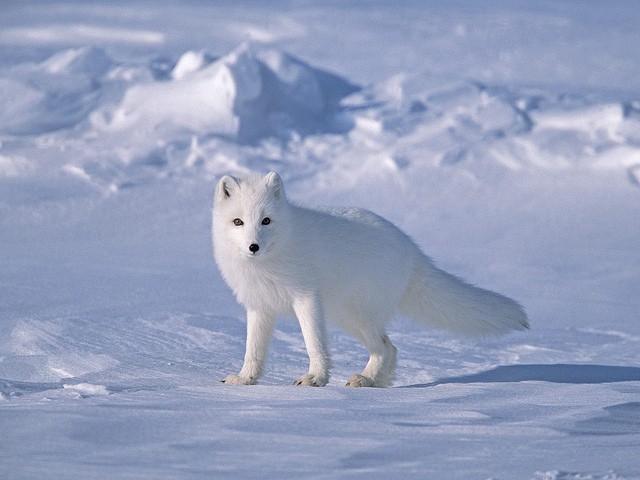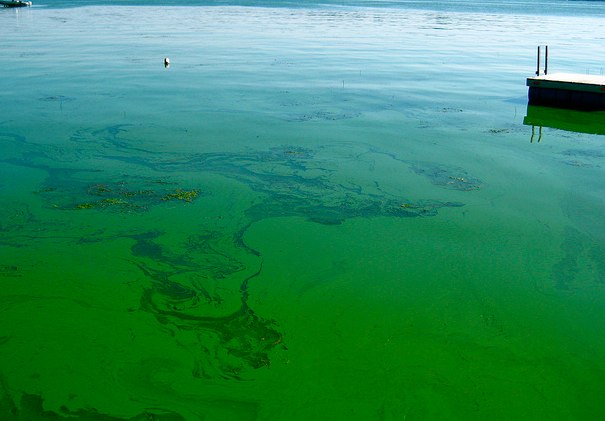

In our site you will discover facts about our planet,
its complex patterns of biomes, plants, and animals,
and how climates ultimately determine the biomes
of our Earth.
Start exploring our biomes by selecting one of the areas below!
Earth is the third planet, and 93,000,000 miles (150,000,000 km.) from the sun. It is estimated to be over 4.5 billion years old.
The planet rotates once every 23 hours, 56 minutes, and 4.09 seconds. It makes one full revolution around the sun every 365 days, 6 hours, 9 minutes, and 9.45 seconds. Earth's axis is tilted at a 23.5° angle.
Earth has a total surface area of 196,800,000 square miles. Approximately 57,300,000 square miles, or 29% of the total surface area is land. Water covers approximately 139,500,000 square miles, or 71% of the total surface area.
The highest temperatures on Earth have reached 136° F (58° C) at Al Asisiyah, Libya. Temperatures of - 128° F (-89° C) have been recorded at Vostok station in Antarctica.
The atmosphere is a thin, gaseous layer of air that envelops the planet. Its inner layer is called the troposphere and reaches only 11 miles above sea level. It contains most of the planet's air, which consists of nitrogen (78%) and oxygen (21%). The stratosphere, or outer layer, stretches 11-30 miles above sea level and contains ozone (O3). Ozone filters out most of the sun's harmful ultraviolet radiation.
More than 99% of earth's atmosphere is less than 50 miles (80 km.) high. However, particles of the atmosphere are found 1,000 miles (1,600 km.) in space above the planet's surface.
Our sun is the source of energy for life. Solar energy drives the climate and weather systems of our planet. The sun is a huge ball of hydrogen (72%) and helium (28%) gases. Tremendous pressure and temperatures in its inner core fuses the hydrogen nuclei and forms helium, releasing enormous amounts of energy.
This energy travels at the speed of light and reaches Earth in slightly more than 8 minutes. Earth receives only about one-billionth of the sun's energy. About 34% of the solar energy reaching the troposphere is reflected back into space by clouds, dust, chemicals. Most of the energy reaches the troposphere as visible light, infrared radiation, and a small amount of ultraviolet radiation that wasn't absorbed by the stratosphere.
This unreflected solar radiation is turned into infrared radiation, or heat. Heat-trapping gasses like water vapor, carbon dioxide, methane, nitrous oxide, and ozone affect the speed at which this radiation is returned to space. Without these gasses, known as the natural greenhouse effect, heat would immediately return to space, making it almost as cold as Mars.
Earth is truly a remarkable planet. It is the only planet in our solar system that has the components necessary to support life as we recognize it. The planet is only a tiny part of the universe, but it is the home of human beings and many other organisms. Animals and plants live almost everywhere on the surface of Earth.
These organisms can live on Earth because it has an atmosphere. The atmosphere moderates daytime and nighttime temperature swings. The atmosphere filters radiant energy during the day, preventing the surface from overheating. At night the atmosphere prevents most of the radiant heat from escaping back into space, keeping the surface warm.
Most organisms - both plants and animals - must also have water to live. Earth has plenty. Seventy-one percent of its surface is covered by water.
Living things also need nitrogen, oxygen, and carbon dioxide. Earth's thin layer of atmosphere provides all of these elements.
The atmosphere also screens out lethal levels of the sun's ultraviolet radiation. The atmosphere, however, could not exist if Earth were not at the exact distance it is from the sun.

Animals, which live within a same-species group, and occupy an area at the same time, are part of a population. All members of the same population have certain traits in common. Populations of different plants and animals interact with each other, and together, these populations form communities. Plants and animals in a particular ecological community, or biome, must be adapted to the same living conditions so they can all survive in the same biome.
Many populations can live in the same area because each species fills a specific role in the community. This role is called a niche. What an animal eats, and where it eats are also part of its niche. Giraffes can live in the same area as gazelles because they eat different plants and don't compete with each other. Dung beetles bury the feces of these animals and lay their eggs in it. The hatching grubs feed on the feces. The buried feces also fertilize plants, which in turn feeds the gazelle and giraffe. Each plant and animal has its own niche in the ecological community, and is important in some way to the survival of the other.
Learn moreClose to 2.5 billion years ago, the earth's surface and atmosphere were stable enough to support primitive life. Single-cell organisms began to develop in the seas that covered the planet. A simple organism known as blue-green algae appeared and spread across the seas. Blue-green algae used sunlight and water to make food, and in the process, created oxygen. As the blue-green algae grew in the earth's seas, they began to fill the atmosphere with oxygen. The oxygen that blue-green algae produced made it possible for other types of organisms to develop.
Plants play the most important part in the cycle of nature. Without plants, there could be no life on Earth. They are the primary producers that sustain all other life forms. This is so because plants are the only organisms that can make their own food. Animals, incapable of making their own food, depend directly or indirectly on plants for their supply of food. All animals and the foods they eat can be traced back to plants.
Learn more
Have you ever wondered why one area of the world is a desert, another a grassland, and another a rainforest? Why are there different forests and deserts, and why are there different types of life in each area? The answer is climate.
Climate is the characteristic condition of the atmosphere near the earth's surface at a certain place on earth. It is the long-term weather of that area (at least 30 years). This includes the region's general pattern of weather conditions, seasons and weather extremes like hurricanes, droughts, or rainy periods. Two of the most important factors determining an area's climate are air temperature and precipitation.
Learn more0
Number of biomes